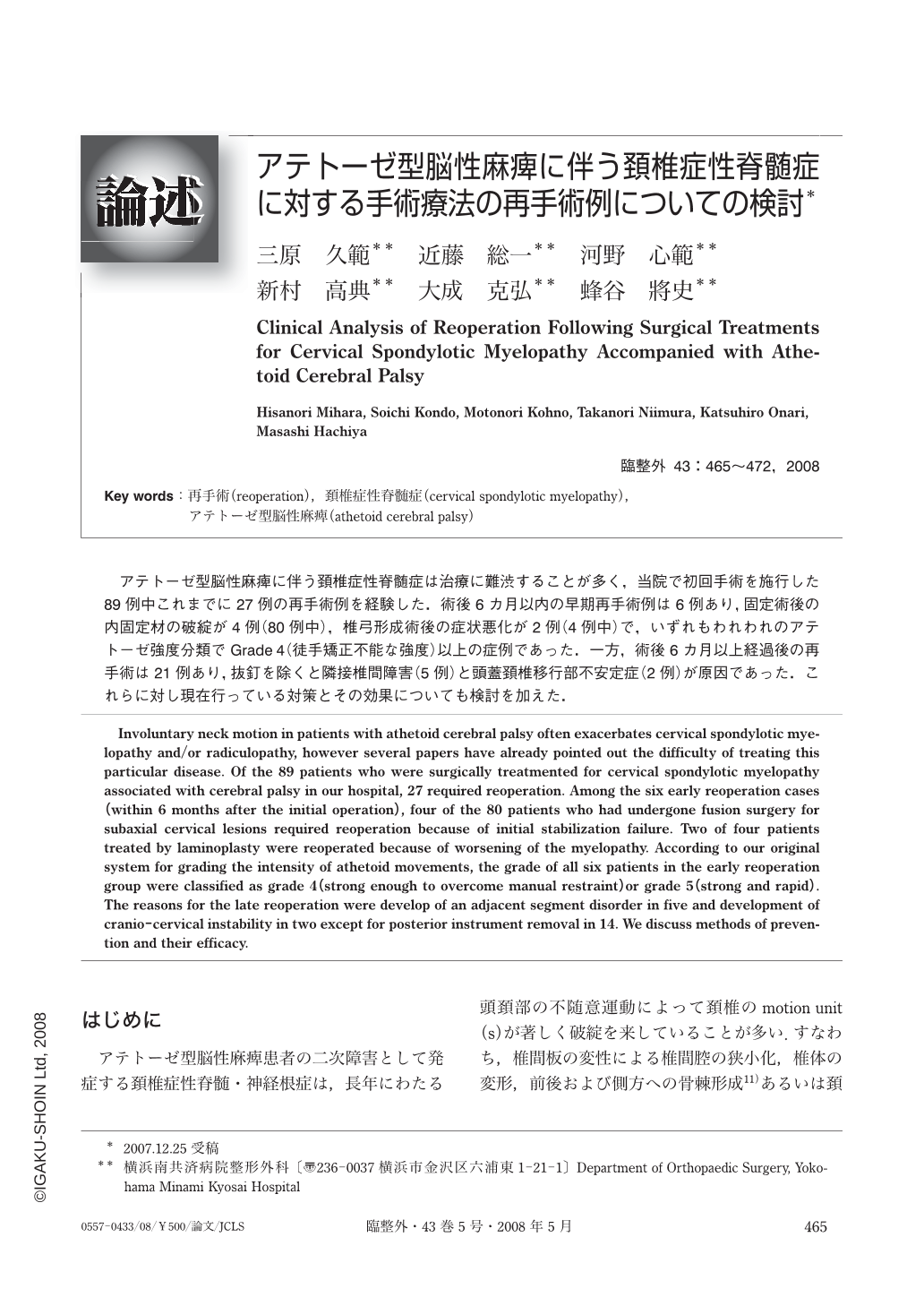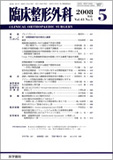Japanese
English
- 有料閲覧
- Abstract 文献概要
- 1ページ目 Look Inside
- 参考文献 Reference
- サイト内被引用 Cited by
アテトーゼ型脳性麻痺に伴う頚椎症性脊髄症は治療に難渋することが多く,当院で初回手術を施行した89例中これまでに27例の再手術例を経験した.術後6カ月以内の早期再手術例は6例あり,固定術後の内固定材の破綻が4例(80例中),椎弓形成術後の症状悪化が2例(4例中)で,いずれもわれわれのアテトーゼ強度分類でGrade 4(徒手矯正不能な強度)以上の症例であった.一方,術後6カ月以上経過後の再手術は21例あり,抜釘を除くと隣接椎間障害(5例)と頭蓋頚椎移行部不安定症(2例)が原因であった.これらに対し現在行っている対策とその効果についても検討を加えた.
Involuntary neck motion in patients with athetoid cerebral palsy often exacerbates cervical spondylotic myelopathy and/or radiculopathy, however several papers have already pointed out the difficulty of treating this particular disease. Of the 89 patients who were surgically treatmented for cervical spondylotic myelopathy associated with cerebral palsy in our hospital, 27 required reoperation. Among the six early reoperation cases (within 6 months after the initial operation), four of the 80 patients who had undergone fusion surgery for subaxial cervical lesions required reoperation because of initial stabilization failure. Two of four patients treated by laminoplasty were reoperated because of worsening of the myelopathy. According to our original system for grading the intensity of athetoid movements, the grade of all six patients in the early reoperation group were classified as grade 4 (strong enough to overcome manual restraint) or grade 5 (strong and rapid). The reasons for the late reoperation were develop of an adjacent segment disorder in five and development of cranio-cervical instability in two except for posterior instrument removal in 14. We discuss methods of prevention and their efficacy.

Copyright © 2008, Igaku-Shoin Ltd. All rights reserved.


